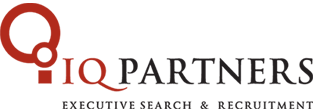Are you planning to hire in 2025? This year is looking promising as many Canadian employers are planning to hire this year. According to a recent survey, 71% of Canadian employers feel positive about the hiring outlook for 2025. 51% of employers plan to hire more people, and 41% plan to keep their current staffing numbers the same. Only 8% plan to reduce their workforce.
2025 appears to be looking good for candidates looking to make a move. For employers, meeting your hiring goals is predicated on working through and overcoming common barriers. As a 25-year executive search recruiter out of Toronto, I’ll discuss the top things that can prevent you from meeting your hiring goals this year.
Top 7 things that will affect your hiring goals in 2025
Setting hiring goals is one thing. But there is a whole host of things that can potentially disrupt your hiring goals. Most you have control over and others are external factors for you to manage.
I have compiled the following list of questions to ask yourself about things that could get in the way of you meeting your hiring goals:
1. Are your hiring priorities focused on the right thing?
There is a stark difference between hiring someone to fill a vacancy and finding a great talent who can help your company thrive. Getting your hiring strategy dialed in is a must to hire the right person the first time. Sure, hiring someone quickly just to fill a role can help you to technically meet a hiring goal. But this type of shortsighted thinking could have you hiring for the same role again in the near future. Focus your efforts on finding the right person for a role, even if it takes a little bit longer to achieve.
2. Do you have realistic hiring expectations?
Your hiring goals need to be realistic and align with your overall business objectives. So, you’ll need to build some flexibility into your goal planning. As you know, business objectives change over the course of the year. Build in some wiggle room to account for strategic changes as the year progresses.
Employers also need to be realistic about the types of candidates they can attract. For example, a marketing agency could set a goal of headhunting the best digital marketer in their industry. But is this realistic if the company is an unknown startup with little industry clout? Likely not.
Two other areas companies need to have realistic goals are when considering timelines and job requirements. Hiring can take time and it often takes longer than anticipated. So, be realistic with your timelines.
A final area where you’ll need to be realistic is with job requirements. If you set unrealistic requirements for candidates, you’ll struggle to find someone to meet them. Be flexible with requirements or you could spend a lot longer than anticipated trying to fill a role.
3. Do you have an optimized and efficient recruitment process?
How strong and robust is your hiring process? Lengthy, complex, or unclear hiring processes can deter candidates and lead to the loss of top talent to competitors. Hiring already takes up a lot of time as it is. Having an unclear process can only add more time and increase recruitment costs.
4. Are your hiring goals realistic given the current market conditions?
Having a strong understanding of current market conditions is a must to set attainable hiring goals. There are three important things to consider:
- Talent shortages: A lack of qualified candidates with the required skills and experience in the job market can significantly hinder hiring efforts.
- The competitiveness of the job market: Intense competition for top talent, especially in high-demand industries, can make it difficult to attract and retain candidates.
- Economic and industry trends: Economic downturns, industry-specific challenges, or uncertainty can impact hiring budgets and candidate availability.
5. Is your employer brand attractive to top talent in your industry?
Companies with a poor reputation or weak employer brand may struggle to attract high-quality candidates. An employer brand is essential for meeting hiring goals because it shapes how current and potential employees perceive your organization as a workplace. A strong employer brand can attract top talent, reduce hiring costs, and improve retention rates.
Investing in employer branding aligns with long-term hiring goals and builds a sustainable talent pipeline. It’s about creating an authentic and compelling image that resonates with both current and potential employees.
Think about it this way – If you are looking for a job, you’ll likely research a potential employer online. In your research, you find the company doesn’t offer a good candidate experience. There is a lack of timely communication, unclear expectations, or negative interview experiences that can drive candidates away.
If the company has bad reviews and previous employers don’t have good things to say, it will likely cause you to second guess if you want to work for the company. How strong is your employer brand?
6. Is the money right?
Salary and benefits are important to all candidates. You have to pay to play. Offering compensation and benefits packages that are not competitive can result in candidates choosing other opportunities.
7. Are you looking for candidates in the right places?
Diversification is key when looking for candidates. Limited presence on job boards, social media, or professional networks can reduce the visibility of job opportunities. Even if you’ve had success in the past, don’t place all your eggs in one basket. Use multiple avenues to connect with candidates online, through social media and in person.
Will you meet your hiring goals in 2025? A final word
Achieving your hiring goals in 2025 requires careful planning, adaptability, and attention to both internal strategies and external market conditions. By focusing on finding the right talent, setting realistic expectations, optimizing recruitment processes, and investing in your employer brand, you can overcome common hiring barriers. Offering competitive compensation and using diverse channels to source candidates will enhance your ability to attract top talent. With a proactive and strategic approach, you can position your organization to meet its hiring goals and thrive in the dynamic job market of 2025.
More Hiring Advice From Our Recruitment Team
5 Hiring Trends You Can Expect to See in 2025
Are We in “The Great Wait” Before Employees Start to Leave?
What You Should (& Shouldn’t) Ask in a First-Round Interview






